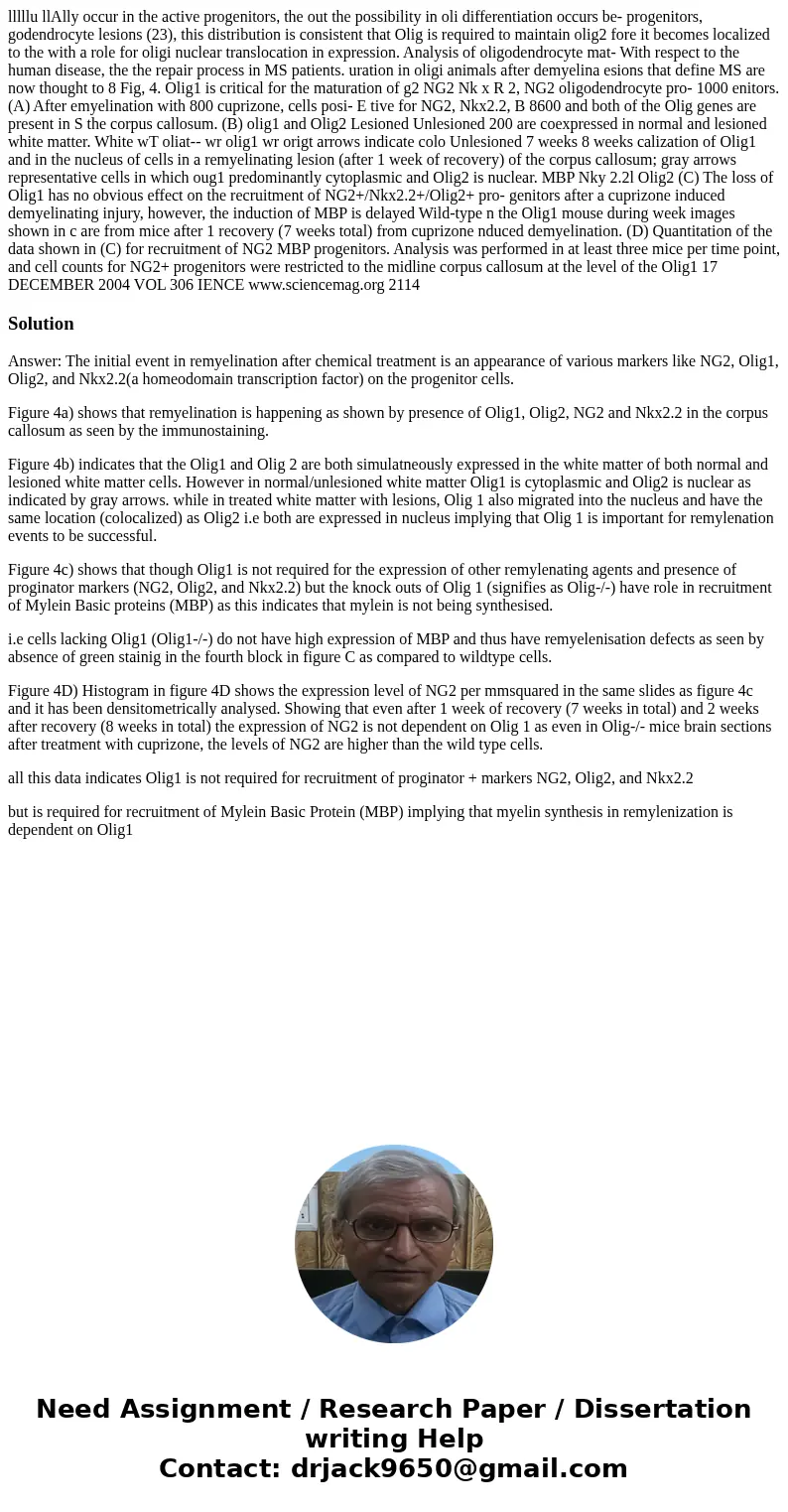lllllu llAlly occur in the active progenitors the out the po
Solution
Answer: The initial event in remyelination after chemical treatment is an appearance of various markers like NG2, Olig1, Olig2, and Nkx2.2(a homeodomain transcription factor) on the progenitor cells.
Figure 4a) shows that remyelination is happening as shown by presence of Olig1, Olig2, NG2 and Nkx2.2 in the corpus callosum as seen by the immunostaining.
Figure 4b) indicates that the Olig1 and Olig 2 are both simulatneously expressed in the white matter of both normal and lesioned white matter cells. However in normal/unlesioned white matter Olig1 is cytoplasmic and Olig2 is nuclear as indicated by gray arrows. while in treated white matter with lesions, Olig 1 also migrated into the nucleus and have the same location (colocalized) as Olig2 i.e both are expressed in nucleus implying that Olig 1 is important for remylenation events to be successful.
Figure 4c) shows that though Olig1 is not required for the expression of other remylenating agents and presence of proginator markers (NG2, Olig2, and Nkx2.2) but the knock outs of Olig 1 (signifies as Olig-/-) have role in recruitment of Mylein Basic proteins (MBP) as this indicates that mylein is not being synthesised.
i.e cells lacking Olig1 (Olig1-/-) do not have high expression of MBP and thus have remyelenisation defects as seen by absence of green stainig in the fourth block in figure C as compared to wildtype cells.
Figure 4D) Histogram in figure 4D shows the expression level of NG2 per mmsquared in the same slides as figure 4c and it has been densitometrically analysed. Showing that even after 1 week of recovery (7 weeks in total) and 2 weeks after recovery (8 weeks in total) the expression of NG2 is not dependent on Olig 1 as even in Olig-/- mice brain sections after treatment with cuprizone, the levels of NG2 are higher than the wild type cells.
all this data indicates Olig1 is not required for recruitment of proginator + markers NG2, Olig2, and Nkx2.2
but is required for recruitment of Mylein Basic Protein (MBP) implying that myelin synthesis in remylenization is dependent on Olig1

 Homework Sourse
Homework Sourse